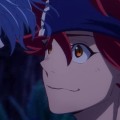Karuna Reiki is one of the most powerful forms of Reiki, which is associated with numerous benefits. There are many different Reiki styles that go beyond traditional Reiki Usui. Each Reiki style has its own philosophies, symbols and tuning processes. All Reiki styles follow the fundamental belief in a universal energy that helps emotional, mental, spiritual and physical healing.
Below are some more popular Reiki styles that have developed over time. Reiki Usui first appears as the primary method of Reiki, and the remaining styles are listed alphabetically, with no preference given to reported effectiveness. Everyone cheer for the mighty Dai Ko Myo, or Master Symbol. This symbol is nourishing and illuminating, and is the most sacred Reiki symbol.
It also has the highest vibration and has the most transformative power of the five Reiki symbols. Dai Ko Myo's healing powers are all-encompassing, healing the upper chakras, aura and soul as a whole. Dai ko myo is the symbol of empowerment and means great lighting or bright light. By assisting in the process of spiritual enlightenment, Dai Ko Myo helps bring Reiki practitioners closer to God.
There are many Reiki systems, and each has multiple symbols. Usui Reiki Ryoho, Karuna Reiki and Shamballa Multi-Dimensional Healing are just some of those that shape the Reiki universe. Reiki level 1 tuning was initially given in four separate tunes. There are some Reiki teachers who still teach with this method.
However, many Reiki teachers provide Level 1 tuning in a single session. After the first tuning, many experience physical symptoms of energy in the palms of the hands, such as tingling, cold, or heat. Anxiety, exhaustion, and sadness are not uncommon after Level 1 tuning. There are at least 30 slightly different branches of Reiki, but Usui is by far the most popular form.
Usui is the method practiced and taught in Japan as early as the 20th century by Makao Usui, who is credited as the founder of modern Reiki. If you're reading or studying, try drawing the sei he ki symbol on the pages of a book or notebook as a way to help you retain that information not only then, but also for the next few days, weeks, or even years. Cho ku rei is most commonly used at the beginning of a Reiki session as a way to help increase the power of Reiki any time it is needed during a session. It is possible that if the original form of Reiki had been rigidly adhered to, it would not have become so popular and only a small number of people could have been blessed with Reiki.
Distance healing is a powerful way to send Reiki energy to someone, even if they are sitting next to you. That's why placing it in the center of a room, along with other Reiki symbols, can help improve vibration and cleaning power. Because Reiki courses are taught and organized in a wide variety of methods, it's important to research and find both the right format and instructor for you. This is one of the most powerful symbols in all Reiki systems, and you can access it on level 3 of Reiki Shamballa MDH.
You can condition it to stay on for as long as necessary or until the next time you perform a self-healing session. There are usually three (sometimes four) levels of Reiki training, each of which focuses on attunement (an empowerment ceremony), education, and practice. Instead, it is a “complementary approach” that can work synergistically with other forms of health care for the benefit of the patient. They are simply conduits to direct and amplify healing energy, but the power comes from within.
.







